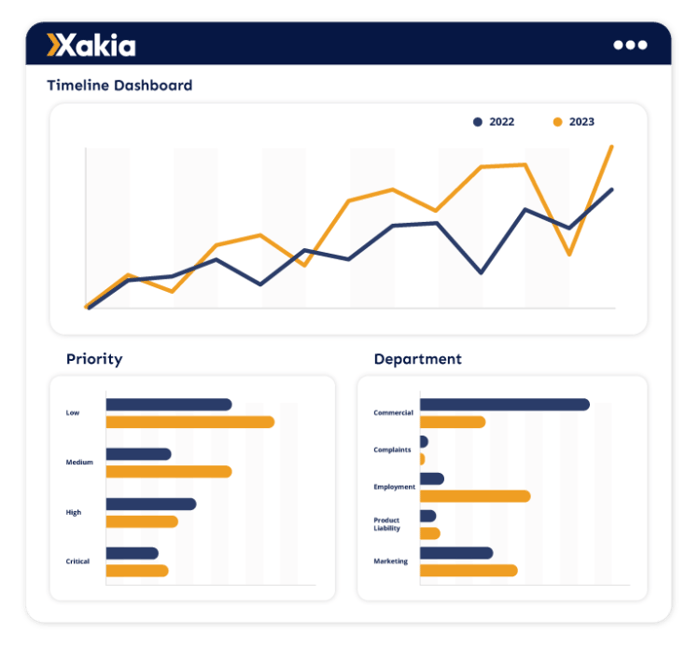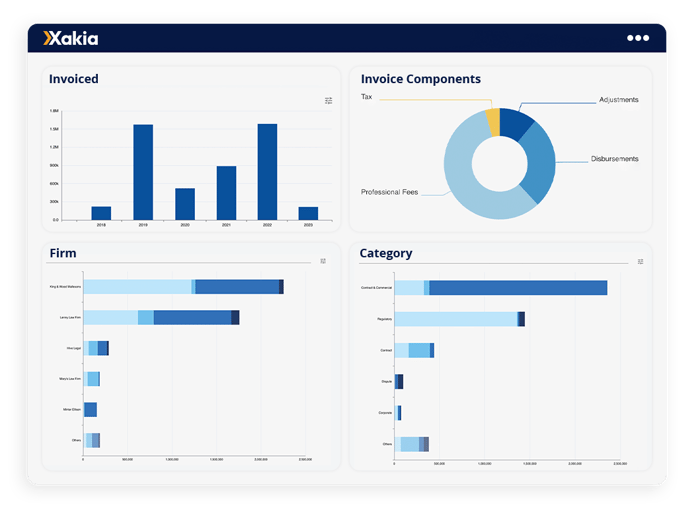Your lawyers are busy, there’s no doubt about that – it’s evident from their long hours, that long list of projects, and perhaps a (now annual) budget overage.
But what exactly are they doing, and more importantly, how does it correspond to the strategic direction of the business? That’s a little harder to discern.
And in fact, it’s that lack of transparency that can lead to troublesome disconnects among the lawyers, general counsel and C-suite – and difficulty understanding the value that the Legal Department brings. Indeed, only just over half of CEOs describe their General Counsel as strategic business partners, and in a Deloitte survey, CFOs ranked the legal role at the very bottom for potential impact on the company.
Top-performing in-house legal teams do not function as “The Department of No,” or black boxes without accountability. They operate like business units, aligning their resources to the company’s strategic objectives and delivering actionable intel – not in nebulous terms like legal matter count, but in the categories of most relevance for the business:
Risk profile
Where are the areas of most risk for the company today – legal, financial, regulatory, reputational? This is a prime directive for the Legal Department and an area where CEOs plan to increase focus in the post-COVID environment.
The Legal Department should:
- Provide real-time assessments of the organization’s risk profile
- Show how they have aligned resources (internal and external) to best handle these risks
- Proactively identify areas of potential risk by monitoring intake data; for example, could an upswing in employment matters suggest a future class action?

Strategic Value
How is the Legal Department working to move the company forward? It’s imperative that in-house lawyers do not get consumed in low-stakes tasks, but that’s an unfortunate reality for many. In a FindLaw Corporate Counsel survey, nearly half of respondents said they spent so much time fighting “fires” that they could not accomplish long-term goals.
The Legal Department should:
- Draft and follow a legal strategic plan that reflects the organization’s goals for the year
- Categorize and report on matters of highest strategic importance, along with resourcing plans that deliver ROI
- Brainstorm and execute ideas to automate, delegate or eliminate matters of lowest strategic importance to free up lawyer time

Legal Content
Legal Departments that get so caught up in busy work that they do not review their data miss out on troublesome trends and/or opportunities for improvement. Again, consider a hypothetical uptick in employment matters: Are they concentrated in one problematic department or one problematic supervisor? Are there opportunities to train or draft new policy?
Meanwhile, although they are not the most sophisticated legal projects, contracts are an area where top-performing Legal Departments strive for continuous improvement, as they recognize agreements’ vital role in business operations. There’s considerable room to grow, according to the EY survey: 69% of legal teams have not yet standardized contract creation; 71 percent do not monitor deviations from standard terms; and 78 percent do not systematically track contractual obligations.
The Legal Department should:
- Regularly review legal data analytics to identify trends and opportunities along legal content lines (employment, intellectual property, litigation and so forth)
- Work to streamline the Legal Intake and Triage of matters so similar, recurring requests – such as a trademark search – prompt the business client to supply needed information upfront; pre-populate forms for repeat needs; and route the matter to the right contact
- Focus time and energy on ensuring contracts are expeditiously reviewed, favorably negotiated and appropriately enforced

Resourcing
We’ve mentioned it already, but it bears a separate section, as the old-school attitude that “There’s no way to budget for Legal” has caused decades of friction between the lawyers and the business – and still haunts the legal teams that are striving to do better.
Universally, the Legal Department’s largest expenses are the internal resources (in-house lawyers, paralegals and staff) and external resources (law firms and legal service providers). Today’s top legal teams exert control over these costs with smart planning and swift course correction.
The Legal Department should:
- Build accurate, comprehensive legal budgets aligned with corporate goals
- Ensure budget compliance throughout the year with legal spend management, focusing on adjusting resourcing decisions for the highest ROI. Legal work should be “right-resourced” not just for cost, but for complexity, risk and strategic value
- Bring new ideas for cost savings that do not sacrifice expertise or quality, such as in-sourcing batches of work (remember that legal content analysis?), implementing law firm panels or seeking volume discounts from major law firm relationships

Legal Department and the C-Suite
In 2024 and beyond, the healthiest organizations – and bottom lines – will work in a legal ecosystem where every stakeholder, from the front-lines lawyers to the general counsel to the CEO, agree on priorities; commit to focusing time, energy and resources on the most important work; and trust one another to solve problems in new and creative ways.
Curious for practical tips for building stronger connections between your Legal Department and the business? Xakia’s white paper, Stakeholder Satisfaction: How Legal Departments Can Win Over The C-Suite, provides advice for connecting lawyers across the organization. Download the white paper now to learn more.